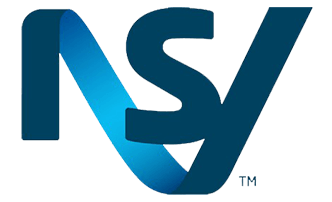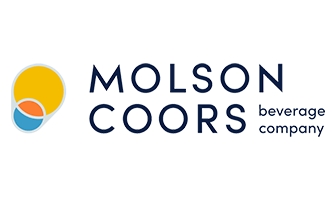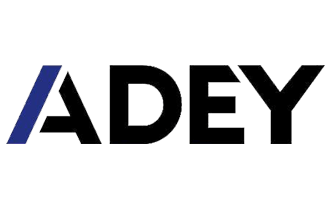Understanding Workplace Fatalities
Understanding Workplace Fatalities: A Closer Look at HSE Statistics
Workplace safety is a paramount concern for employers and employees alike. Ensuring a safe working environment is not just a legal requirement but also a moral responsibility. Understanding the risks associated with different industries and occupations within the industry can help identify potential hazards and implement preventive measures effectively. In this article, we delve into the latest statistics provided by the Health and Safety Executive (HSE) in the UK to shed light on the importance of occupational safety, how training works and what compliance OMS can support your business with.
The Reality of Workplace Fatalities
According to the HSE’s latest statistics on fatal injuries in the workplace, there were 135 workplace fatalities reported in 2022/23. This figure highlights the ongoing challenge of keeping employees safe and the need for continuous improvement in health and safety practices.
Industry-Specific Risks
The statistics reveal that some industries carry a higher risk of fatal injuries than others, this is not new information by any means. Construction, agriculture, and manufacturing are consistently identified as sectors with increased hazards. For instance, falls from height, contact with moving machinery, and being struck by vehicles are common causes of fatal accidents in these industries.
Occupational Groups at Risk
Within industries, certain occupational groups face a higher risk of fatal injuries. Construction site workers, agricultural workers, and those working with heavy machinery or hazardous substances are particularly vulnerable. The HSE statistics underscore the importance of tailoring safety measures to address the unique risks faced by different job roles.
Importance of Risk Assessments
Effective risk assessments are key to preventing workplace fatalities. Identifying potential hazards, evaluating their severity, and implementing appropriate control measures can significantly reduce the likelihood of accidents. Regularly reviewing and updating risk assessments in response to changing circumstances is crucial for maintaining a safe work environment.
Safety Culture and Leadership
Creating a positive safety culture is not solely the responsibility of employees; it requires leadership commitment and engagement. Employers should lead by example, prioritise safety, and actively involve employees in the decision-making processes related to health and safety. Encouraging open communication, reporting near-misses, and providing avenues for feedback contribute to a safer work environment. Avoiding implementing any ‘targets’ where the team must create a certain about of records or complete a certain number of documents or walks makes for a better reaction to improving safety on site.
The Role of Technology
Advancements in technology have brought about significant improvements in workplace safety. Innovations such as wearable sensors, real-time monitoring systems, and automation can help detect potential hazards, alert workers to danger, and minimize human error. Integrating these technologies into existing safety protocols can enhance overall safety standards.
Embracing complete training for your people
Training plays a crucial role in improving health and safety in the workplace. Here are some ways in which training can contribute to a safer working environment:
- Increased Awareness: Training programmes provide employees with valuable information about potential workplace hazards, safety protocols, and best practices. By educating employees about the risks associated with their specific job roles, they become more aware of potential dangers and can take appropriate precautions to prevent accidents.
- Knowledge of Safe Practices: Training equips employees with the necessary knowledge and skills to perform their tasks safely. It teaches them how to handle equipment, machinery, and hazardous substances correctly. When employees understand safe practices, they are less likely to engage in risky behaviours that could lead to accidents or injuries.
- Effective Use of Safety Equipment: Training ensures that employees understand how to use personal protective equipment (PPE) and safety devices effectively. They learn how to properly wear and maintain safety gear such as helmets, gloves, goggles, and harnesses. This knowledge is essential for minimising the risks associated with specific job tasks.
- Emergency Preparedness: Training should include emergency response training, such as first aid and evacuation procedures. Employees benefit form learning how to respond quickly and appropriately to accidents, injuries, or other emergencies. This preparedness can make a significant difference in minimising the impact of an incident and potentially save lives.
- Improved Risk Assessments: Training helps employees develop the ability to identify potential hazards in their work environment. By properly learning how to conduct risk assessments, evaluate risks, and take proactive measures to mitigate them site safety will improve markedly. This proactive approach to risk assessment can prevent accidents before they even occur and promote a safer work environment.
- Behaviour and Attitude Shift: Training not only imparts knowledge but also influences attitudes and behaviours. It helps instil a safety-conscious culture by promoting a sense of responsibility and accountability among employees. When safety becomes a shared value, individuals are more likely to adhere to safety protocols and actively contribute to maintaining a safe workplace.
- Compliance with Regulations: Training ensures that employees are aware of legal obligations and industry-specific regulations pertaining to health and safety. By keeping up-to-date with these requirements, organisations can avoid legal issues, fines, and penalties. Compliance with regulations is essential for creating a safe working environment and protecting the well-being of employees.
Training plays a fundamental role in improving health and safety in the workplace. It enhances employee awareness, knowledge, and skills, leading to better hazard recognition, safe practices, emergency preparedness, and risk assessment. By investing in training programs, organizations demonstrate their commitment to employee safety and create a culture of safety that benefits everyone involved. OMS see that with the companies who have worked with us to create their learning and development program for health and safety. Their team members make a massive impact on the safety on site when they return to the business having completed their training. This is true whether they complete a 30 day NEBOSH Level 6 Diploma or half day course from the Ladder Association on working with steps and step stools.
What’s the impact of external support?
OMS Consultancy offers a range of health and safety services that can significantly contribute to improving services in several ways whether it’s implementing an ISO system or being the competent person for Health and Safety within a business.
Access Expertise and Knowledge within the employee cost
OMS Consultancy provides access to a team of experienced health and safety professionals who possess extensive knowledge and expertise in various industries and sectors. By engaging their services, organisations can benefit from their in-depth understanding of health and safety regulations, best practices, and industry-specific risks. This expertise helps identify areas of improvement and to implement effective safety measures tailored to the specific needs of the organisation.
Comprehensive Risk Assessments completed
OMS Consultancy conducts thorough risk assessments to identify potential hazards and assess the associated risks in the workplace. This includes evaluating the physical environment, machinery and equipment, work processes, and employee behaviours. Through these assessments, OMS can help organisations identify and prioritize safety measures that will have the greatest impact on reducing risks and improving overall safety.
Customised Safety Solutions
OMS Consultancy recognises that each organisation has unique requirements when it comes to health and safety. They work closely with clients to understand their specific needs and develop customised safety solutions that are specific to the people and the workplace. This approach ensures that the services provided address the specific challenges and risks faced by the business, leading to more effective and tailored safety improvements.
Compliance with Regulations
Keeping up with ever-evolving health and safety regulations can be challenging for one person in an organisation, especially if safety is a tag on to their usual day job. OMS Consultancy keeps clients informed about changes in legislation and helps ensure compliance with regulatory requirements. By staying up to date with the latest regulations companies can avoid penalties and legal issues while maintaining a safe working environment.
Ongoing Support and Monitoring suited for you
OMS Consultancy provides ongoing support to clients, offering guidance and assistance in implementing health and safety practices. From helping to establish safety committees, conducting regular safety audits, and providing recommendations for continuous improvement. You chose what’s right for you. By monitoring safety performance for you it will help management to address any issues promptly, meaning you can maintain a proactive and dynamic approach to safety management.
Cultural Shift towards Safety
OMS Consultancy’s services can help you to foster a positive safety culture because often an outsider can effect change quicker than an internal team. By emphasising the importance of safety, engaging employees, and promoting accountability at all levels, they can help create an environment where safety is ingrained in the organization’s values and behaviours. This cultural shift leads to long-term improvements in safety performance and a safer working environment for all.
Support for safety
OMS Consultancy’s health and safety services offer you the expertise, resources, and support needed to improve safety. From comprehensive risk assessments to customised solutions, ongoing support, and developing training programs, our services can help enhance your safety performance, comply with regulations, and create a positive safety culture. By partnering with OMS, organisations can achieve significant improvements in health and safety, ultimately leading to a safer and more productive workplace.
The HSE statistics on workplace fatalities serve as a stark reminder of the importance of occupational health safety. By understanding the risks associated with different industries and job roles, employers can implement effective measures to protect their employees. Prioritising the right elements to avoid RIDDOR fatalities like up-to-date risk assessments, investing in training programs, fostering a safety-conscious culture, and embracing technological advancements can contribute to reducing workplace fatalities. Ultimately, it is the collective effort of employers, employees, and regulatory bodies that will ensure safer workplaces and preserve human lives. OMS are simply here to help achieve the very best in health and safety.


 01530 833533
01530 833533











